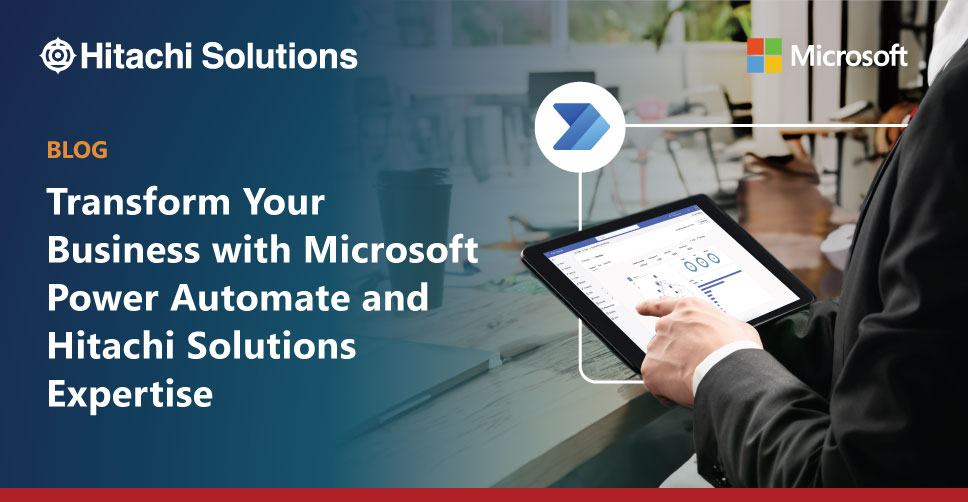

Today, it is critical to be agile and efficient if you want to stay competitive. Robotic process automation (RPA) has emerged as a game-changer for this — automating repetitive tasks, improving accuracy, and streamlining operations.
However, as technology progresses, legacy RPA solutions may struggle to keep pace with the dynamic needs of modern businesses. This is where Microsoft Power Automate really shines — offering not just a robust solution with automation capabilities but a comprehensive suite of tools for process management, AI integration, and data analysis.
Modernize RPA to Microsoft Power Automate
Modernizing RPA to Microsoft Power Automate presents an opportunity for companies to unlock new levels of efficiency and productivity. With Power Automate, you can seamlessly integrate automation into your existing Microsoft ecosystem, leveraging familiar tools like Dynamics 365, Power BI, and Azure. This integration not only streamlines operations but also facilitates collaboration across teams and departments, breaking down silos.
And moving to cloud-based Power Automate eliminates the need for a costly on-prem platform and empowers you to focus your resources on driving growth and innovation rather than managing infrastructure — ultimately leading to increased agility, reduced costs, and improved overall performance.
Making The Move to Power Automate
From democratizing bot and workflow creation to integration with AI services to significant cost savings, the benefits of modernizing RPA with Power Automate are pretty clear. What isn’t as clear is how to navigate the migration process successfully.
Hitachi Solutions recently hosted a webinar, Learn How to Modernize Your Outdated RPA Fast, featuring me and Microsoft’s Global Director of Hyperautomation Rudy Dillenseger. The goal is to help companies better understand the RPA landscape, the value and ROI of modernizing, as well as how to prioritize and execute a migration to Power Automate efficiently and effectively.
If you have some time, view the on-demand recording. It is chock full of practical knowledge around RPA challenges, opportunities, benefits, and strategies. For some encouragement, I’ve highlighted a few key insights below:
- Customer Case for Change — We’ve been hearing from customers about their common pain points and challenges. Backlogs of automation tasks, the need for a consolidated solution, the desire to leverage AI for enhanced capabilities, and rising maintenance costs are some of the compelling reasons they are considering upgrading their automation solutions. We also hear about what customers are saying about Power Automate and explore some of their stories, outcomes, and big wins.
- Enterprise Scale ROI with Hyperautomation — To set the stage, we outline Microsoft’s approach to addressing these challenges, focusing on citizen developers and no-code solutions. We also explore hyperautomation, a business-driven disciplined approach that involves the orchestrated use of multiple technologies, tools, and platforms to achieve enterprise-scale ROI. As a leader in hyperautomation, Microsoft is able to provide a single platform for everyone in the organization to build solutions, not just offer siloed tools.
- Migration Strategies — We then shift the conversation to the practical aspects of migrating from legacy automation platforms to Power Automate. We emphasize key steps such as the importance of assessing existing automation assets, prioritizing migration efforts based on business value, and defining a roadmap for future automation initiatives. Hitachi Solutions’ approach combines technical expertise with knowledge transfer to empower organizations throughout the migration process.
Ready to Learn More?
Modernizing your legacy RPA with Microsoft Power Automate offers a transformative opportunity to enhance efficiency, reduce costs, and drive innovation within your organization. By leveraging the advanced capabilities of Power Automate, and taking a strategic approach to migration and adoption, you can justify your business case and position yourself for success.
Hitachi Solutions has been helping customers do this for years and we have a deep breadth and depth of expertise when it comes to RPA, Power Automate, and intelligent automation. Our tech hub for rapid solution delivery team is always ready to support you migrate, modernize, and do more with less.
For more information, be sure to view the full on-demand webinar. We also have a cool infographic, 11 Key Ingredients for RPA Modernization Success (link to graphic). Check it out as it provides our tried-and-true best practices for successful and efficient RPA replatforming. Or contact us today to get a free assessment and consultation.


